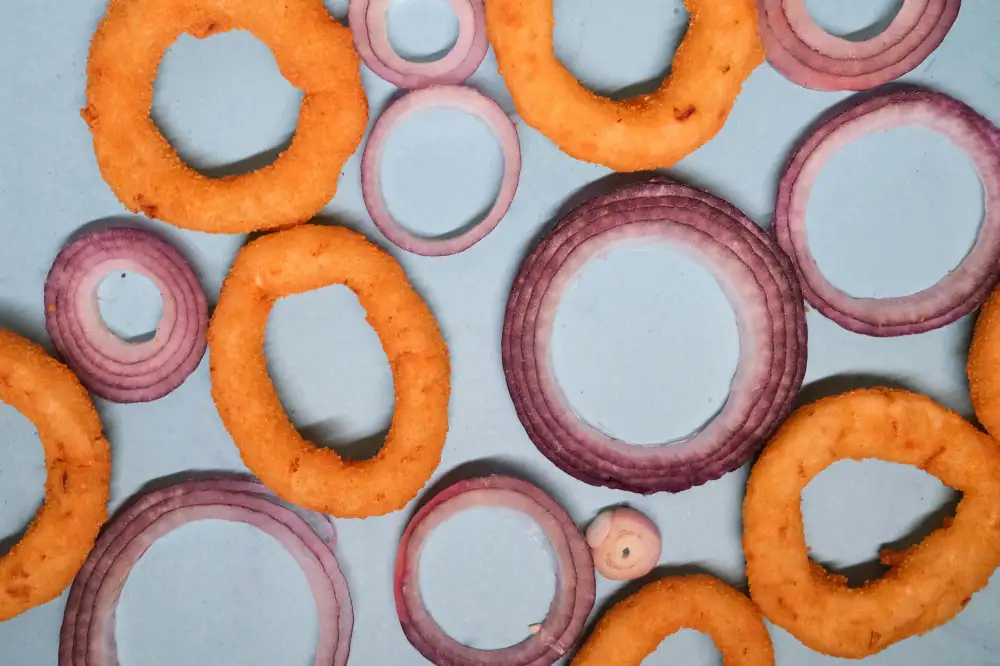Delicious and Nutritious: Mastering the Art of Vegetable Stir Fry - A Flavorful Recipe Guide

Vegetable stir fry is a versatile and delicious dish that has been enjoyed for centuries in various cultures around the world. This cooking technique involves quickly frying bite-sized pieces of vegetables in a hot pan, resulting in a vibrant and flavorful dish. The high heat and fast cooking time help retain the vegetables' nutrients, making it a healthy choice for any meal. Whether you're a seasoned chef or just starting your culinary journey, mastering the art of vegetable stir fry is sure to elevate your cooking skills and impress your taste buds.
Benefits of Vegetable Stir Fry
Vegetable stir fry is not only a delicious dish but also packed with numerous health benefits. Firstly, it is a great way to incorporate a variety of vegetables into your diet, ensuring you get a wide range of essential nutrients. Vegetables like broccoli, bell peppers, and carrots are rich in vitamins A and C, which boost your immune system and promote healthy skin. Additionally, stir frying vegetables helps retain their natural colors and textures, preserving their nutritional value. This cooking method also requires minimal oil, making it a healthier option compared to deep-frying or sautéing. Moreover, the quick cooking time of stir frying helps vegetables retain more of their water-soluble vitamins. Lastly, vegetable stir fry is low in calories and high in fiber, making it an excellent choice for weight management and supporting digestive health. Incorporating vegetable stir fry into your regular meals can contribute to a well-balanced and nutritious diet.
Essential Ingredients for Vegetable Stir Fry
To create a flavorful and nutritious vegetable stir fry, you'll need a variety of fresh vegetables. Here are some essential ingredients to include:
1. Vegetables: Opt for a colorful mix of vegetables such as bell peppers, broccoli, carrots, snap peas, mushrooms, and onions. These provide a range of flavors and textures.
2. Protein: Add protein to your stir fry by including tofu, tempeh, or thinly sliced chicken, beef, or shrimp. This will make the dish more satisfying and balanced.
3. Aromatics: Garlic and ginger are key aromatics that add depth and flavor to your stir fry. Mince or grate them before cooking.
4. Oil: Use a high smoke point oil like peanut oil or vegetable oil for stir frying. These oils can withstand high heat without burning.
5. Sauce: A flavorful sauce is crucial for enhancing the taste of your stir fry. You can use store-bought sauces like soy sauce or teriyaki sauce, or make your own using ingredients like soy sauce, rice vinegar, sesame oil, honey, and cornstarch.
6. Seasonings: Enhance the flavor with seasonings such as salt, pepper, chili flakes, or Chinese five-spice powder according to your preference.
By having these essential ingredients on hand, you'll be well-equipped to create a delicious and nutritious vegetable stir fry that will satisfy both your taste buds and your health goals.
Step-by-Step Guide to Making Vegetable Stir Fry
4.1 Preparing the Vegetables: Start by washing and cutting your choice of vegetables into thin, uniform pieces. Popular options include bell peppers, broccoli, carrots, snap peas, and mushrooms. This ensures even cooking and enhances the dish's visual appeal.
4.2 Heating the Oil: Heat a tablespoon of oil in a large skillet or wok over medium-high heat. Use oils with high smoke points like vegetable or peanut oil for stir frying. Once the oil is hot, add aromatics like minced garlic or ginger to infuse flavor into the dish.
4.3 Stir Frying the Vegetables: Add the vegetables to the hot skillet or wok and continuously stir them using a spatula or tongs. Cook them for 3-5 minutes until they become tender-crisp and retain their vibrant colors. Be careful not to overcook as it can result in mushy vegetables.
4.4 Adding Sauce and Seasonings: Prepare a sauce by combining soy sauce, oyster sauce, sesame oil, and cornstarch mixed with water for thickening. Pour this sauce over the stir-fried vegetables and toss them gently to coat evenly. Additionally, you can sprinkle some salt, pepper, or chili flakes according to your taste preferences.
4.5 Serving and Enjoying: Transfer the vegetable stir fry onto a serving plate or bowl. Garnish with chopped green onions or toasted sesame seeds for added flavor and texture. Serve it hot alongside steamed rice or noodles for a complete meal.
Follow this step-by-step guide to create a delicious vegetable stir fry that showcases the natural flavors of fresh vegetables while retaining their nutritional value
1 Preparing the Vegetables
4.1 Preparing the Vegetables
Before diving into the world of vegetable stir fry, it's important to properly prepare your vegetables. Start by selecting a variety of fresh and colorful vegetables such as bell peppers, broccoli, carrots, snap peas, and mushrooms. Wash them thoroughly under cold water to remove any dirt or residue.
Next, it's time to chop the vegetables into bite-sized pieces. This not only ensures even cooking but also makes it easier to eat and enjoy. Slice the bell peppers into thin strips, cut the broccoli florets into smaller pieces, julienne the carrots, and trim the snap peas.
For mushrooms, wipe them clean with a damp cloth and slice them thinly. It's worth noting that different vegetables have different cooking times, so consider this when chopping them. For example, harder vegetables like carrots may take longer to cook than softer ones like snap peas.
Once all your vegetables are chopped and ready to go, you're one step closer to creating a delicious and nutritious vegetable stir fry that will tantalize your taste buds.
2 Heating the Oil
2. Heating the Oil
Heating the oil is a crucial step in vegetable stir fry as it allows for proper cooking and enhances the flavors of the dish. Here's how to heat the oil for a perfect stir fry:
- Choose a high smoke point oil such as peanut, canola, or vegetable oil. These oils can withstand high temperatures without burning.
- Place a wok or large skillet over medium-high heat and add about 1-2 tablespoons of oil.
- Swirl the oil around to coat the bottom of the pan evenly.
- Allow the oil to heat up for about 1-2 minutes until it shimmers and starts to ripple.
- To test if the oil is hot enough, you can drop a small piece of vegetable into it. If it sizzles and quickly cooks, then it's ready.
Heating the oil properly ensures that your vegetables will cook quickly and evenly while retaining their crispness. It also prevents them from becoming greasy or soggy. Remember not to let the oil smoke excessively as this can lead to a burnt taste in your stir fry.
By following these steps, you are on your way to creating a delicious and nutritious vegetable stir fry that will impress your family and friends with its vibrant flavors and textures.
3 Stir Frying the Vegetables
3. Stir Frying the Vegetables
Once the vegetables are prepared, it's time to stir fry them to perfection. Stir frying is a cooking technique that involves quickly cooking the vegetables over high heat while continuously stirring them. This method helps retain their vibrant colors, crispness, and nutritional value.
To start, heat a wok or large skillet over medium-high heat. Add a tablespoon of oil with a high smoke point, such as vegetable or peanut oil. Allow the oil to become hot but not smoking.
Next, carefully add the prepared vegetables to the hot oil. Begin with the vegetables that require longer cooking times, such as carrots or broccoli. Stir fry them for a minute or two before adding in quicker-cooking vegetables like bell peppers or mushrooms.
Continuously toss and stir the vegetables using a spatula or tongs to ensure even cooking. The high heat will cook the vegetables quickly while maintaining their crunchiness and flavors.
Avoid overcrowding the pan as it can lead to steaming rather than stir frying. If necessary, cook the vegetables in batches for better results.
Stir fry the vegetables for about 3-5 minutes until they are tender-crisp and have developed some caramelization. The exact cooking time may vary depending on your preference and the type of vegetables used.
Remember to keep an eye on the heat and adjust if needed to prevent burning or sticking. The goal is to achieve a slightly charred exterior while preserving their natural sweetness and nutrients.
Once cooked, remove from heat promptly to prevent overcooking. Transfer the stir-fried vegetables onto a serving plate or bowl.
Now that you've mastered stir frying your vegetables, it's time to move on to adding sauce and seasonings in our next step-by-step guide!
4 Adding Sauce and Seasonings
4. Adding Sauce and Seasonings
Once your vegetables are cooked to perfection, it's time to add the final touch of flavor with sauces and seasonings. This step is crucial in elevating the taste profile of your vegetable stir fry.
Start by preparing a sauce that complements the flavors of your vegetables. Popular choices include soy sauce, teriyaki sauce, oyster sauce, or hoisin sauce. These sauces add depth and umami to your stir fry. You can also experiment with homemade sauces using ingredients like garlic, ginger, sesame oil, and vinegar.
To add the sauce, create a well in the center of the pan by pushing the vegetables aside. Pour the desired amount of sauce into the well and let it heat for a few seconds before stirring it into the vegetables. This ensures that every bite is coated with deliciousness.
In addition to sauces, seasonings play an important role in enhancing the overall taste of your dish. Common seasonings for vegetable stir fry include salt, pepper, chili flakes, and Chinese five-spice powder. Sprinkle these seasonings over the vegetables while stirring continuously to evenly distribute them.
Remember to taste as you go along and adjust the seasoning according to your preference. Be cautious not to overdo it as you want to enhance rather than overpower the natural flavors of the vegetables.
By adding carefully chosen sauces and seasonings, you can transform a simple vegetable stir fry into a burst of flavors that will tantalize your taste buds.
5 Serving and Enjoying
5. Serving and Enjoying
Once your vegetable stir fry is cooked to perfection, it's time to serve and enjoy this delicious and nutritious dish. Here are a few tips to make the most of your creation:
- Transfer the stir fry to a serving dish or individual plates. The vibrant colors of the vegetables will make it visually appealing.
- Consider garnishing with fresh herbs like cilantro or basil, which will add a burst of flavor and freshness to the dish.
- Serve your vegetable stir fry alongside steamed rice or noodles for a complete meal. The combination of the stir-fried vegetables with the grains provides a balanced and satisfying experience.
- If you prefer a lighter option, you can serve the stir fry on its own as a side dish or pair it with grilled chicken, tofu, or shrimp for added protein.
- Don't forget to savor each bite! Take your time to appreciate the flavors and textures that come together in this delightful dish.
Remember, vegetable stir fry is not only delicious but also packed with essential nutrients. By incorporating a variety of colorful vegetables into your meal, you're ensuring that you're getting an array of vitamins, minerals, and antioxidants that are beneficial for your overall health.
So go ahead and indulge in this flavorful creation - mastering the art of vegetable stir fry will not only delight your taste buds but also contribute towards a healthier lifestyle.
Tips and Variations for Vegetable Stir Fry
1. Choose a variety of vegetables: Experiment with different combinations of vegetables to add color, texture, and flavor to your stir fry. Some popular options include bell peppers, broccoli, carrots, snap peas, mushrooms, and baby corn.
2. Cut vegetables uniformly: To ensure even cooking, cut the vegetables into similar-sized pieces. This will help them cook at the same rate and maintain their crispness.
3. Use high heat: Stir frying is a quick cooking method that requires high heat. Make sure your pan or wok is hot before adding the oil and vegetables. This will help retain the vibrant colors and crunchiness of the vegetables.
4. Add protein: Enhance the nutritional value of your stir fry by adding protein sources like tofu, tempeh, chicken, beef, shrimp, or even eggs. Cook the protein separately before adding it to the stir fry for optimal flavor and texture.
5. Experiment with sauces: Don't be afraid to get creative with sauces! Traditional options like soy sauce, oyster sauce, or hoisin sauce work well, but you can also try using teriyaki sauce, peanut sauce, or even a homemade dressing made from ingredients like ginger and garlic.
6. Add some crunch: For added texture and flavor contrast in your stir fry, consider tossing in some toasted nuts or sesame seeds towards the end of cooking.
7. Try different seasonings: Explore various seasonings to enhance the taste profile of your vegetable stir fry. Fresh herbs like basil or cilantro can add a burst of freshness while spices like ginger or chili flakes can bring a hint of heat.
8. Serve with accompaniments: Pair your vegetable stir fry with steamed rice or noodles for a complete meal experience. You can also serve it alongside other Asian-inspired dishes such as spring rolls or dumplings.
By following these tips and experimenting with different variations, you can elevate your vegetable stir fry to new levels of deliciousness while enjoying the health benefits of a nutritious meal.
In conclusion, vegetable stir fry is not only a delicious and flavorful dish, but it also offers numerous health benefits. By incorporating a variety of vegetables into your stir fry, you can ensure that you are getting a wide range of vitamins, minerals, and antioxidants. Additionally, the quick cooking time helps to retain the nutrients in the vegetables.
With the right ingredients and techniques, anyone can master the art of vegetable stir fry. It is a versatile dish that can be customized to suit individual tastes and dietary preferences. Whether you prefer a spicy Thai-inspired stir fry or a simple garlic and ginger-infused version, there are endless possibilities to explore.
By following the step-by-step guide provided in this article, you can create a delicious and nutritious vegetable stir fry in no time. Remember to choose fresh and seasonal vegetables for the best results.
So why not give vegetable stir fry a try? It is an easy and convenient way to incorporate more vegetables into your diet while enjoying a tasty meal. With practice and experimentation, you will soon become an expert at creating your own unique stir fry recipes. So grab your wok and start mastering the art of vegetable stir fry today!
Published: 06. 02. 2024
Category: Recipes



